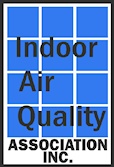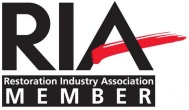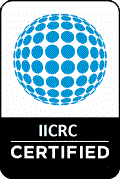Common Molds
Below are some of the more common molds we tend to find during our investigations.
Alternaria
Alternaria is a very common mold often found on decaying wood, in composts, on plants and food, and in different types of soil. Its distribution is worldwide and is frequently found in outside air, where in temperate climates, the conidia (spore) levels reach their peak in late summer. Indoors it can be found in dust and carpets, on damp spots around showers and window frames, and virtually any area where condensation exists. The ubiquitous and common Alternaria is an important fungal allergen. Allergies to Alternaria will most often cause an immediate mediated allergic response, however, there have been documented cases of hypersensitivity pneumonitis to airborne exposure of Alternaria spores. Serious infection associated with Alternaria is rare. Alternaria mycotoxins have not been the subject of much investigation although they are produced.
Aspergillus

There are more than 160 species of Aspergillus,
16 of which have been documented to cause disease in humans. They are among the most
common groups of environmental fungi and many species are isolated from a variety of
substrates, including grains, nuts, cotton, organic debris and water damaged, organic
building materials. The most frequently encountered opportunistic Aspergillus
pathogen is A.fumigatus, which is seen most abundantly in decomposing organic materials.
Aspergillus fumigatus and A.niger have been identified as the more harmful species of the
Aspergillus group.
Aspergillus is considered a common environmental mold that
can pose health risks when it is present in elevated levels. Health problems due to
Aspergillus exposure may include headaches, eye and skin irritation, asthma, aggravation
of existing respiratory conditions, other typical allergic symptoms, and hypersensitivity
pneumonitis. Hypersensitivity and allergic responses can be triggered by minimal
exposure and especially in people who have an existing sensitivity to mold allergens and
toxins or who have compromised or suppressed immune function. Aspergillus can
proliferate successfully indoors when conditions become favorable resulting in an increase
in the number of spores, and therefore, mycotoxin concentrations that can be harmful.
Chaetomium

Chaetomium is a common mold that is commonly found on deteriorating wood products and is known to emit a musty odor. It is frequently found on water-damaged drywall and other building products, especially those containing cellulose. Several species have been reported to play a major role in the decomposition of cellulose-made materials and this mold is able to cause these materials to disintegrate. The decomposition process is especially rapid under moist conditions. A water damage indicator mold, this fungus is reported to be allergenic and toxic and can cause typical allergic and toxic responses in sensitive individuals.
Cladosporium

Cladosporium is an extremely common mold
found in our area. The spores readily become airborne and can be carried on wind
currents for long distances. The high season for Cladosporium is typically late
summer and autumn while the low season is typically winter and early spring.
Cladosporium enzymes breakdown cellulose, pectin, and lignin that are major components of
leaf litter.
Inside, Cladosporium can be found in dirty
refrigerators, in condensation reservoirs, on moist window frames, and pretty much on any
moist, porous surface. Cladosporium often discolors interior paint, paper, or
textiles stored in humid environments.
The ability for Cladosporium to
rapidly and heavily sporulate makes this mold a common airway allergen associated with
asthma and hay fever. Cladosporium may cause more serious illnesses in individuals
with suppressed immune function.
Pennicillium

The spores of Penicillium contain mycotoxins responsible for causing a variety of allergy symptoms and illnesses. Mycotoxins are chemicals produced by fungi that are most concentrated in the spores but are also present in actively growing mold filaments. Under normal circumstances, the indoor concentration of spores is generally low enough to not provoke an immune response except in those people who are sensitive to the specific mycotoxins or have compromised immune systems. Mycotoxins can cause a variety of short-term, as well as long-term, illnesses. Symptoms due to mycotoxin exposure include dermatitis, cold and flu symptoms, sore throat, headache, fatigue, diarrhea, and impaired or altered immune function, which may lead to opportunistic infections.
Stachybotrys

Stachybotrys is also a water damage indicator mold infamously referred to sometimes as “Black Mold.” When identified in either air or bulk sampling "may signal moisture presence or a potential for health problems" (Macher et al., 1999). Stachybotrys is generally found on materials with high cellulose content (such as wallboard and ceiling tiles) that become chronically moist or water damaged from excessive relative humidity, pipe or roof leaks, condensation, or flooding. Several toxins are produced by Stachybotrys and are known to be toxic to humans exposed to significant quantities. If Stachybotrys spores are released into the air, there is a potential for allergic, respiratory, or immunological symptoms to develop or become exacerbated. These conditions include asthma, hypersensitivity pneumonitis, allergic rhinitis, dermatitis, sinusitis, and conjunctivitis (New York City Department of Health, 1993).










